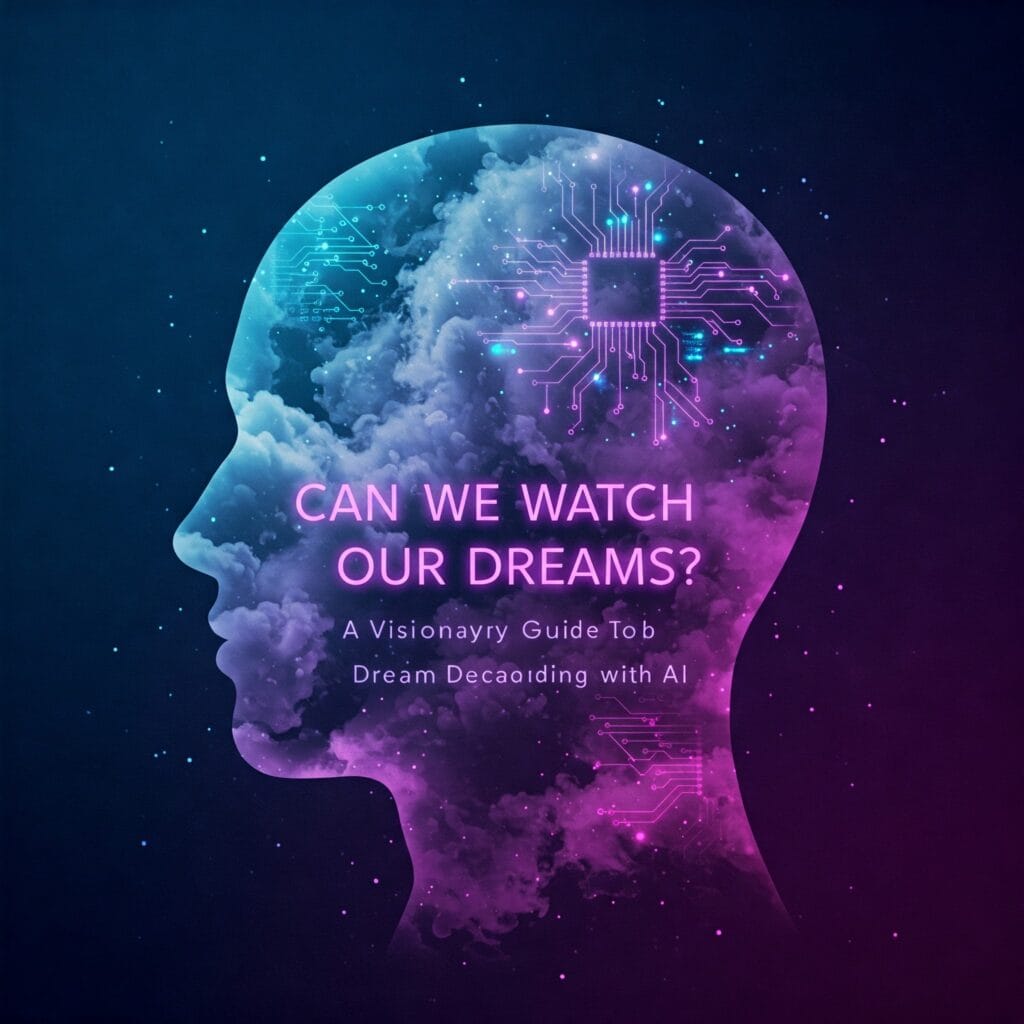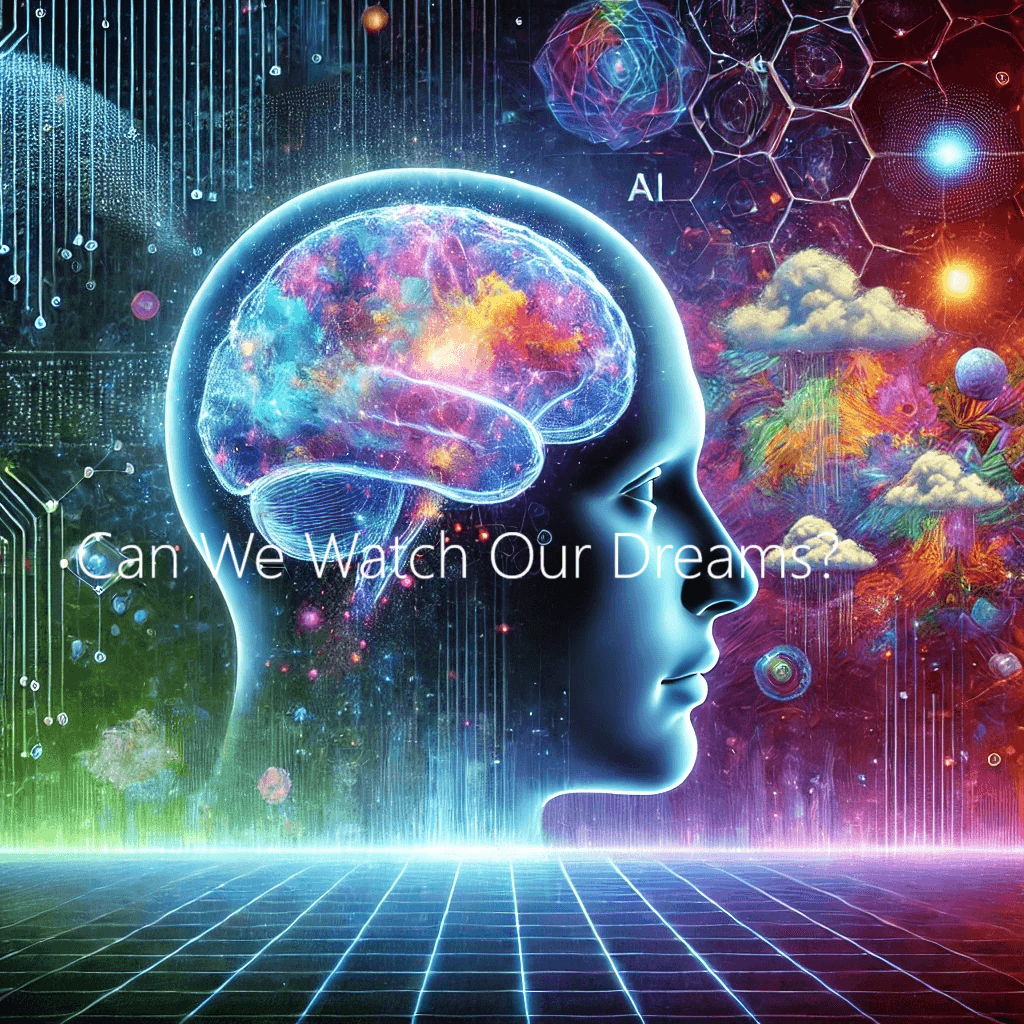Future Tech Insight | EZAffiliatech
Imagine a world where we could watch the very dreams we experience each night—a world where AI could bring our subconscious to life. This isn’t science fiction; it’s the emerging field of Dream Decoding with AI. By harnessing the power of artificial intelligence and advanced brain imaging techniques, researchers are unlocking the mysteries of the human mind, translating elusive dream content into vivid, visual representations.
What if we could not only understand what we dream but also see it? Dream Decoding with AI could revolutionize not just neuroscience but also mental health, creativity, and even entertainment. In this article, we explore the fascinating potential of AI in decoding our most intimate thoughts—our dreams—and what it means for the future of human consciousness.
What Is Dream Decoding?
Every night, billions of humans close their eyes and enter mysterious landscapes shaped by memories, emotions, and subconscious thoughts. But what if we could one day record and watch these dreams, as vividly as a movie?
As artificial intelligence rapidly evolves and merges with neuroscience, a once unthinkable concept edges closer to reality: dream decoding—translating neural activity into visual reconstructions.
This article isn’t science fiction—it’s a scientifically grounded vision of what may soon be possible, along with a complete roadmap for how future researchers might get there.
Dream decoding refers to the hypothetical ability to extract visual or symbolic content from dreams using brain data, typically gathered during sleep. It’s not about mind-reading—it’s about using brainwave patterns to generate visual approximations of what we might be experiencing while dreaming.
While we’re not there yet, existing technologies already hint at the path forward.
The Science Behind Dream Decoding with AI
1. Capturing Neural Signals During REM Sleep

- To decode dreams, scientists must first capture the neural activity of the brain while we’re asleep. Non-invasive tools like EEG (Electroencephalography), fNIRS (functional Near-Infrared Spectroscopy), and fMRI (functional Magnetic Resonance Imaging) are used to monitor brain activity during REM sleep (Rapid Eye Movement), the phase when most vivid dreams occur.
- EEG detects electrical activity in the brain, providing data on brain wave patterns that can reveal which regions are active during dreaming.
- fNIRS measures brain activity by monitoring blood flow, helping to map how oxygen is being consumed in different brain areas, which can offer insights into cognitive states during dreams.
- fMRI allows for the visualization of brain regions activated during dream states through changes in blood oxygen levels.
2. Decoding Brain Activity Into Visual Representations
- After capturing the brain’s activity during sleep, AI models, like deep neural networks and machine learning (ML), come into play.
- AI uses large datasets from brain scans to learn how different neural signals correspond to images, emotions, or experiences.
- By training AI on this data, researchers can develop models capable of mapping the brain’s neural activity to the images or narratives within a dream.
3. Creating Visual Representations of Dreams
- AI can then generate images or videos that represent the contents of a person’s dream. For example, if a person dreams of a beach, the AI might reconstruct visuals resembling the dreamer’s subconscious imagery, such as a calm seascape with waves crashing.
- AI tools like Generative Adversarial Networks (GANs) can create photo-realistic images by learning how real-world objects, landscapes, or scenes look based on input from brain data.
How Dream Visualization Could Work
1. Capturing Neural Signals During REM Sleep
- Use non-invasive tools like EEG, fNIRS, or advanced MRI to monitor brain activity.
- Focus on REM sleep, when the brain is most active and dream content is vivid.
- Record electrical signals, eye movement, pulse, and skin response to track emotional engagement.
2. Training an AI Model with Waking-State Data
- Show subjects thousands of real-world images and record how their brains respond.
- Build an AI model that learns to map specific brain activity patterns to visual elements (e.g., shapes, faces, motion, colors).
- This creates a personal “neural dictionary” of visual associations.
3. Applying the Model to Sleep-State Data
- Once asleep, the AI analyzes brain patterns and predicts visual outputs based on the previously trained mappings.
- It doesn’t “see” the dream but reconstructs a plausible interpretation using emotional, visual, and symbolic cues.
4. Generating Dream Visuals
- A generative model (like a diffusion-based AI) converts decoded patterns into artistic or surreal images or short animations.
- These visuals could reflect the theme, mood, and general content of the dream—though not with full clarity.
5. Post-Dream Comparison and Refinement
- Subjects recall and describe their dreams after waking.
- The AI adjusts its prediction model using this feedback, becoming more accurate over time.
Why It Matters: Real-World Applications
AI’s Potential in Understanding the Human Mind
The field of Dream Decoding with AI offers incredible potential for understanding not only dreams but also the very fabric of our consciousness. This could lead to breakthroughs in mental health and therapy. For instance, decoding dreams could help psychiatrists and psychologists understand subconscious thoughts and emotions, aiding in the treatment of conditions like PTSD (Post-traumatic stress disorder), anxiety, and depression.
Mental Health Therapy
Dream analysis can help uncover subconscious trauma, anxiety, or suppressed emotions. AI-powered visuals could assist therapists in better understanding patients’ inner worlds.
Creative Inspiration
Artists and storytellers could visualize their unconscious imagery—dreams as creative tools for music, films, painting, or writing.
Neuroscience Education
Interactive dream visualizations could revolutionize sleep studies, psychology, and consciousness research, making abstract concepts tangible.
Lucid Dreaming
Dreamers could analyze their own dream patterns and train themselves for better dream recall or lucidity using biofeedback systems.
What Are the Risks? Ethics Matter
As exciting as this is, dream visualization poses serious questions:
- Privacy: Are our dreams sacred spaces? Who owns the data—us, the tech companies, or governments?
- Consent: Could vulnerable people be coerced into sharing their inner thoughts?
- Abuse: In authoritarian regimes, dream tech could be used to manipulate or monitor dissent.
- Bias: AI may misinterpret symbolism or project culturally skewed visuals.
These are not sci-fi concerns—they’re real ethical dilemmas we must address before the technology exists.
Are We Close? Real-World Signals
Here’s what’s already been achieved (as of 2025):
- In 2013, neuroscientist Dr. Yukiyasu Kamitani and his team at ATR Computational Neuroscience Laboratories in Japan made headlines by reconstructing images seen by awake individuals using fMRI brain scans and machine learning. Their study showed how patterns of brain activity could be used to recreate images from a subject’s visual cortex—paving the way for dream decoding research.
- Researchers have correlated dream content with specific neural signatures.
- BCI (brain-computer interface) tech is advancing in speed and miniaturization.
- Generative AI models now create near-real images from text and abstract cues.
While full dream movies are not yet possible, we are seeing the blueprints emerge.
Final Thoughts: It Starts with a Vision
Science fiction becomes science fact when enough minds pursue it. Dream visualization may take decades—or only years. The only thing standing between imagination and reality is scientific effort guided by ethics.
This article is a conceptual framework, a visionary guide for researchers, futurists, and innovators. It invites us all to imagine what comes next, with responsibility, curiosity, and caution.
So, ask yourself:
If you could watch your dreams, would you want to?






Political Satire: The Art of Criticism and Freedom of Expression
June 4, 2023
Phasellus vel ante mi. Aliquam sit amet velit tortor. Fusce efficitur diam sit amet mauris consequat, vel vestibulum est gravida. Praesent lacinia velit nec arcu aliquam euismod at at dolor. Vivamus efficitur pellentesque nulla et